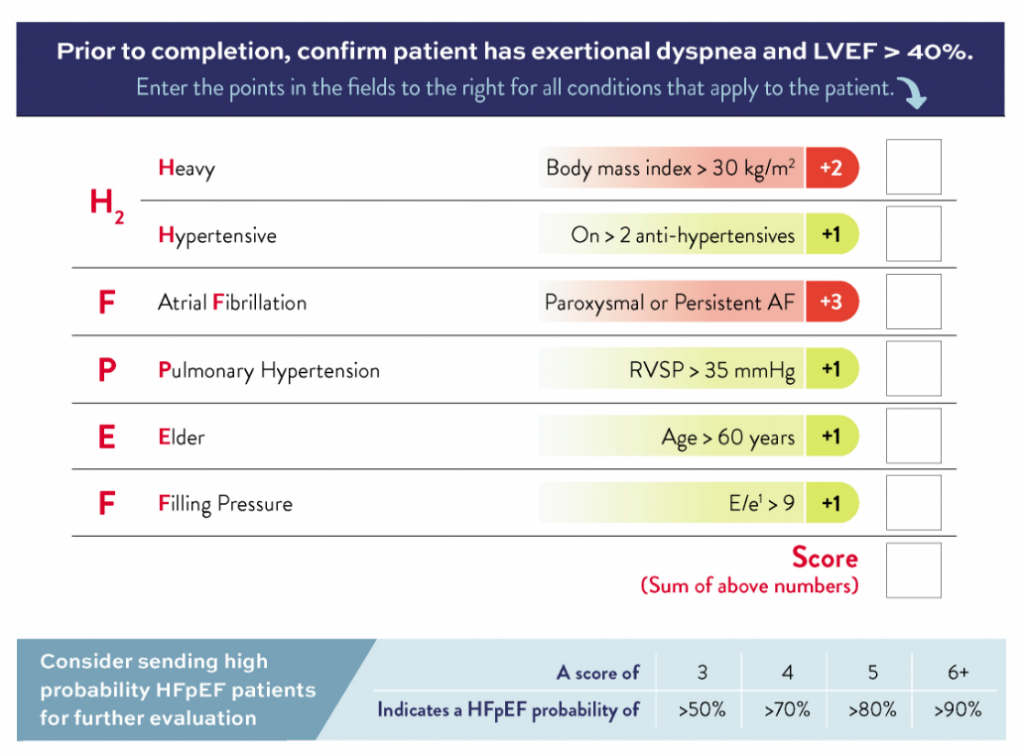Healthcare Professionals
Identification & Referral of HF patients with EF≥40%
Heart Failure with EF≥40% has been historically underdiagnosed as it is often confounded with other conditions. Recently, diagnosis rates have improved with greater awareness of the condition. Identification of HF with EF≥40% and elevated left atrial pressure (LAP) is the first step to effective therapy.
1. Learn the common symptoms & signs of HF with EF≥40%
Identifying and treating elevated LAP from HF with EF≥40% is critical to improving HF symptoms and quality of life.
Common symptoms
- Breathlessness or dyspnea
- Exercise intolerance
- Fatigue
- Swelling of extremities
Common signs
- Atrial fibrillation
- Elevated NT-proBNP / BNP
- Jugular distension
- Hepatojugular reflux
- Pulmonary crepitation
- 3rd heart sound
2. Identify candidates with the H2FPEF score
The H2FPEF score was created to simplify the identification of HF patients among those with dyspnea.
H2FPEF Scoring Model1
Using only six demographic variables, the calculated total score correlates with the probability of HF in patients with exertional dyspnea.
A score totaling 3 points or more means a >50% chance of HF.
3. Referral
High-probability candidates should be referred to an HF specialist to receive a differential diagnosis and/or to determine if the patient has elevated LAP. Once diagnosed, a HF patient and their physician can evaluate therapy options, including atrial shunting.
Consider sending high-probability candidates for further evaluation.
4. What’s next for the patient?
The candidate will be evaluated against RESPONDER-HF study inclusion and exclusion criteria to determine if they have “Responder” characteristics and qualify as a trial candidate.
- Reddy YNV, Carter RE, Obokata M, Redfield MM, Borlaug BA. A Simple, Evidence-Based Approach to Help Guide Diagnosis of Heart Failure With Preserved Ejection Fraction. Circulation. 2018;138(9):861-870.

